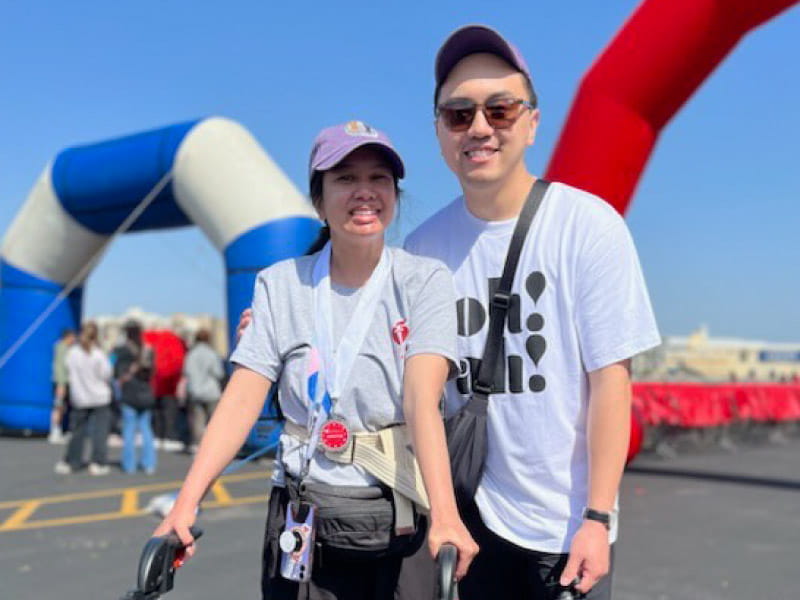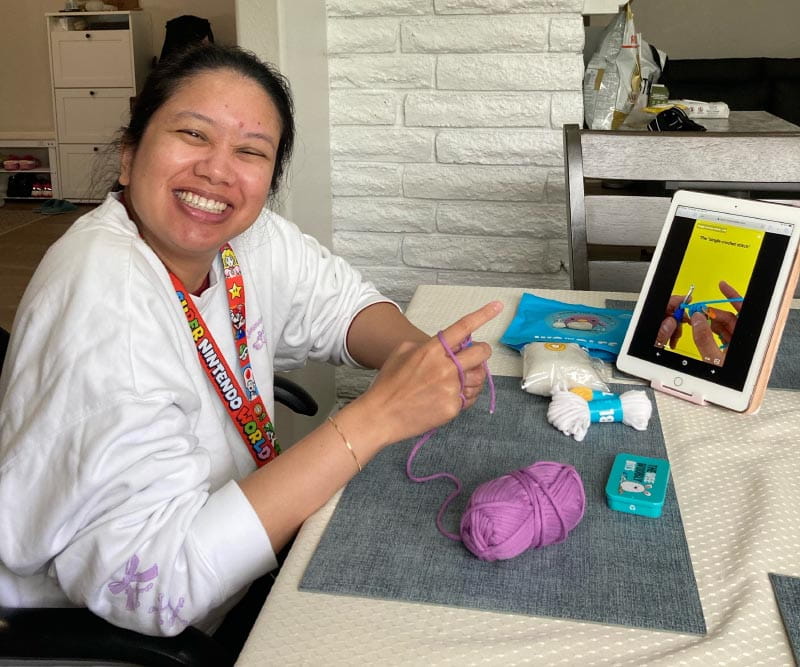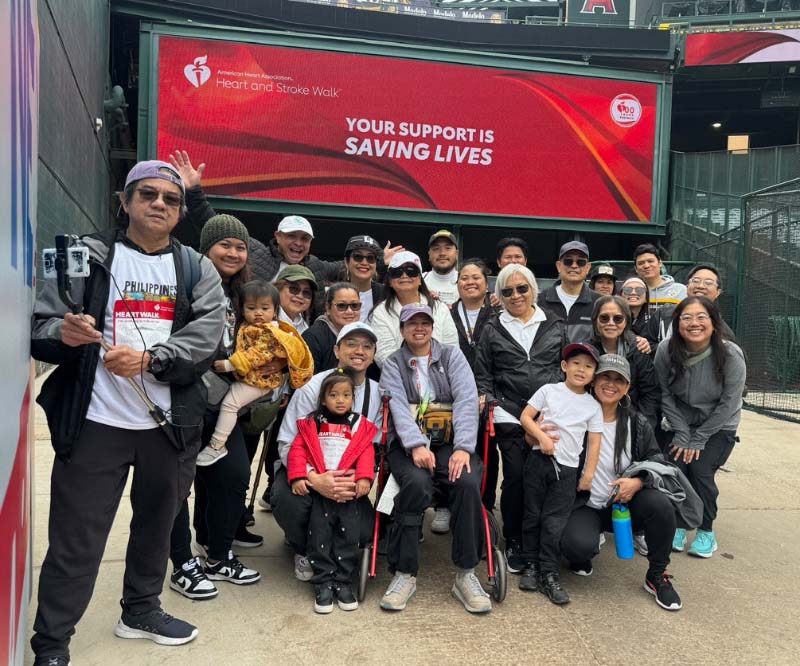Just as she started a nursing career, 2 strokes changed the course of her life
By Diane Daniel, American Heart Association News

Precious Guan was excited about her budding nursing career. Born and raised in California, she finished college there and went to New Hampshire for her master's degree. When she wasn't studying, she was outdoors, often hiking and rock climbing.
Her career started at a Boston teaching hospital, where she began training to work in cardiac surgery and recovery. At 28, she felt that her life was playing out perfectly.
One week in November, she started feeling unsteady on her feet. She found herself exhausted all the time, with occasional headaches. She'd had migraines since age 12 and thought it was related.
After she missed a few days of work and wasn't improving, a friend urged her to go to the emergency room.
Doctors examined Guan and did bloodwork. Tests were inconclusive, and they sent her home. But she still wasn't steady enough to work.
Worried friends checked on her daily.
A couple days into that stretch, a friend found Guan on the bed, unable to move or speak clearly. The right side of her face drooped. The friend called 911.
Guan woke up in the hospital with no memory of what had happened.
Doctors told her she'd had a stroke. They couldn't do anything to treat it because they didn't know when it had started.
Her mother flew out from California to help take care of her. A mutual friend also contacted Gil Navarro. Navarro and Guan had dated for seven years before she left for graduate school and a career. Now a math teacher in California, he flew to Boston as soon as he heard the news.
Guan spent a month in the hospital, including in a rehabilitation wing for physical therapy. Her right side, though not paralyzed, was extremely weak and her gait was unsteady. She could talk, and her cognition was fine. She was afraid but hopeful.
Doctors couldn't determine the reason for her stroke. They found that she had hypercoagulability, an increased tendency of blood to clot, and thought it could be related, but they were unsure.
Once Guan returned to her Boston home, her mother continued to stay with her. Guan needed the help, as she was still unsteady. A couple weeks later, Guan choked while trying to swallow water. Her mother called 911.
At the hospital, doctors discovered that Guan had experienced a second stroke.
Her balance and coordination were severely impacted. She also had deficits in speech, motor ability and cognitive functioning. The optimism from her previous recovery was gone, replaced by disappointment.
"I felt angry for her because she'd made so much progress after the first stroke and then lost so much with the second," Navarro said.
Again, doctors could find no conclusive reason for her stroke. Strokes without a known cause are called cryptogenic. About 1 in 3 clot-caused strokes are classified as cryptogenic.
After two months at a rehabilitation facility, Guan had improved, but still struggled with walking and swallowing. She could walk on flat surfaces using a walker but needed someone by her side for safety.
More than anything, Guan missed her sprawling Filipino family, most of whom lived in the Long Beach area where she grew up. Her father is one of 12 siblings and her mother one of eight. She jokes that she can't even keep track of all her nieces and nephews.
"I didn't want to leave my doctors, but I also really wanted to go back to California," she said. "They mean everything to me."
Her sister and Navarro worked together to arrange her transportation, insurance and medical care in her home state.
That was six years ago. Now 35, Guan lives with Navarro and his parents in a single-level home in Cerritos, southeast of Los Angeles. Her parents moved close by.
She uses a four-wheel walker or wheelchair and is on full-time disability.
Although she can now swallow, she always takes precautions.
Even now, eating causes her some anxiety. She only eats foods with certain textures and always has water on hand to help with chewing and swallowing.
She continues to do physical therapy for her gait. Her right side remains weaker.
"When you're growing up, you think what your life is going to be like – having a job, having a family," she said. "It didn't turn out like that for me."
Still, Navarro praised Guan's persistence and general positivity.
"Recovery has taken longer than we expected or wanted, but year by year, Guan continues to improve," Navarro said.
Guan keeps busy reading (especially historical romance) and watching anime series. She recently started learning to crochet through how-to videos.

Another way she's kept active is by training for local Heart Walks benefiting the American Heart Association. She participates in 1-mile events in both Los Angeles and Orange County. To build her endurance, she and Navarro walk a circuit near their home.
During the events, her fellow walkers include some 30 family members and friends. She's especially fond of the Orange County walk, held in Angel Stadium of Anaheim, because walkers are flashed on the jumbotron.
"Those are really powerful images," she said. "Overall, it's just amazing to have a walk where everyone goes at the survivors' pace and then we all celebrate together at the end."

Stories From the Heart chronicles the inspiring journeys of heart disease and stroke survivors, caregivers and advocates.




